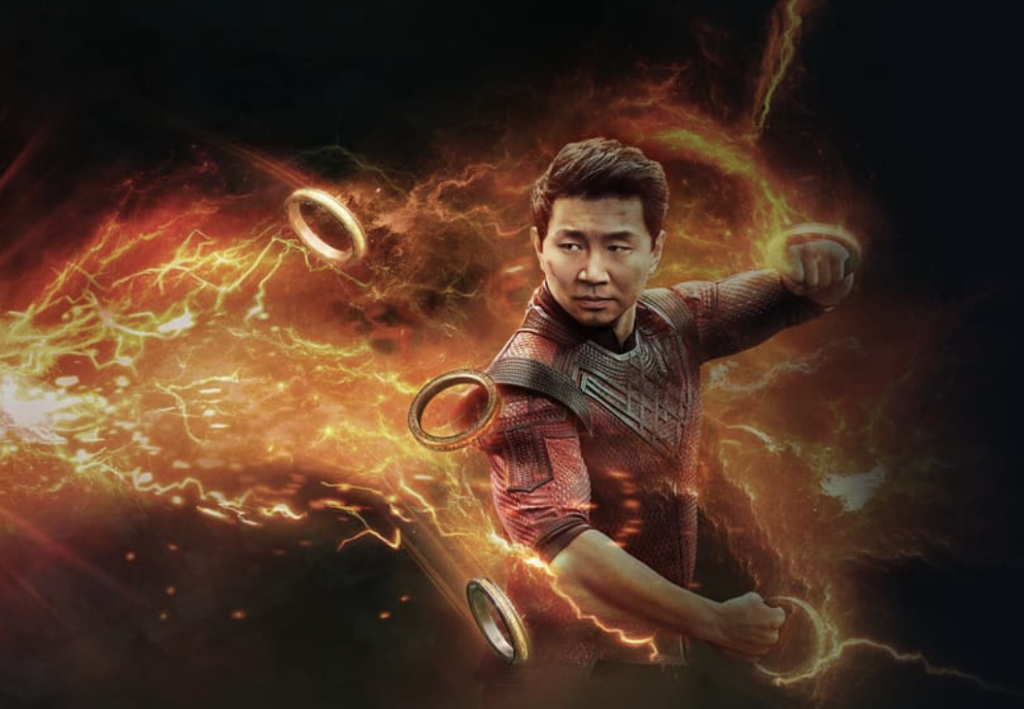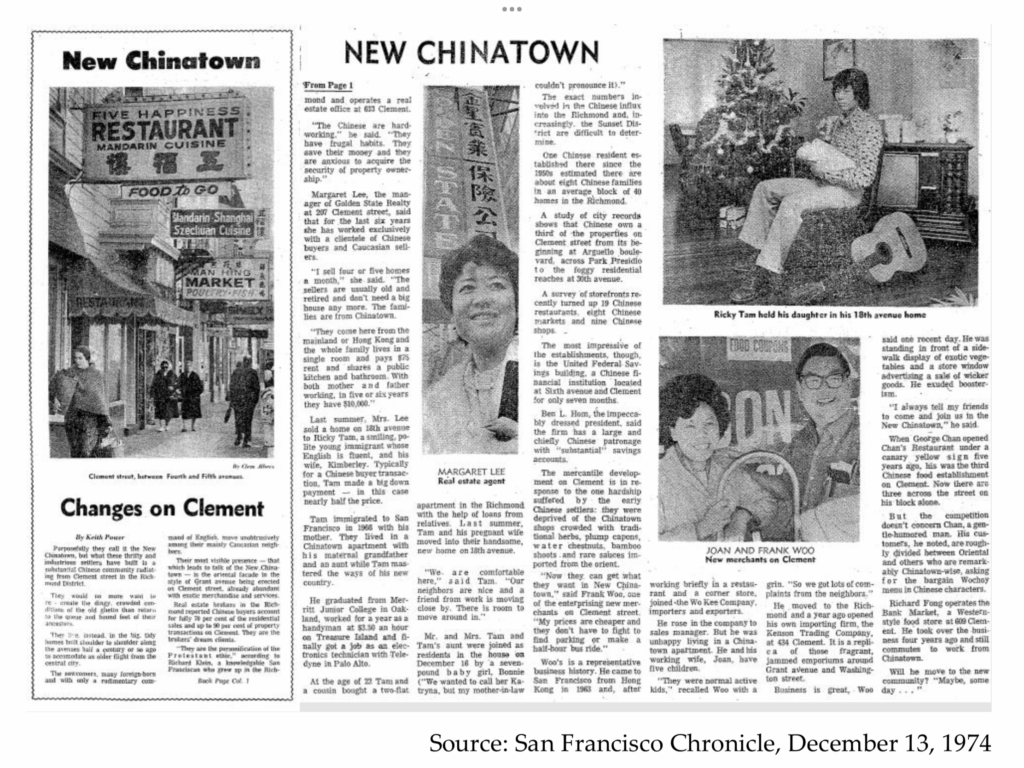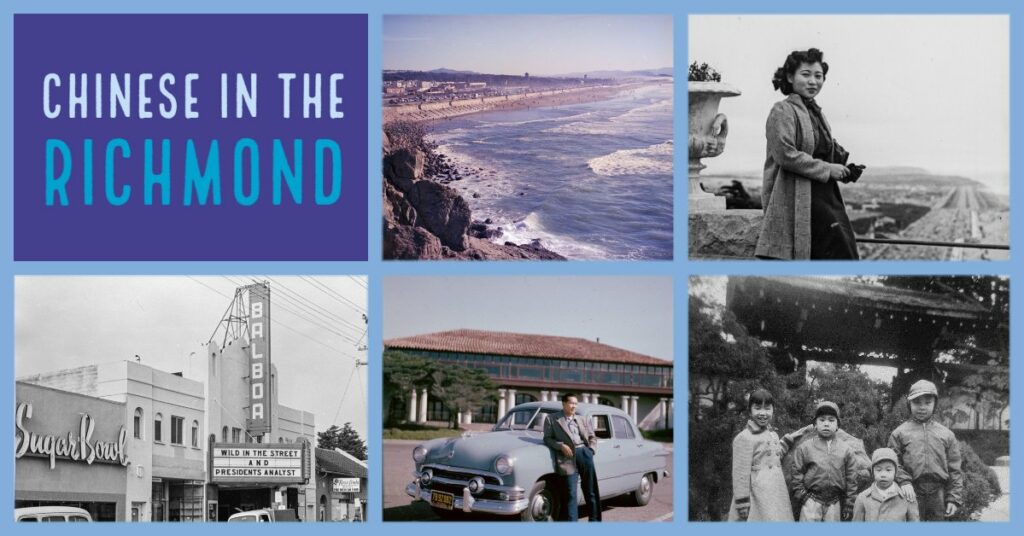What can the “Shang-Chi bus line” teach us about living together in our globalizing world?


If you are familiar with the 2022 movie Shang-Chi and the Legend of the Ten Rings, you might remember the prominent scene that takes place on SF’s 1-California Muni bus line. (But Muni did not want their name on the movie, for good reason!) That’s not a random bus line chosen for the movie. The “1” line is the successor to the “55 Sacramento” line, which was the iconic line that connected Chinatown with “New Chinatown,” the first place Chinese settled in large numbers outside Chinatown. Together, these lines provide unique windows to the Chinese-American story of racism, advocacy, and migration beyond Chinatown.
Growing up, I remember my grandfather (whose immigration story can be found here) walking from our home on 8th and Balboa to the now defunct 55 Sacramento bus line terminus on the NW corner of 6th Avenue and Clement. There, he took the 55 to Chinatown almost every day. I took that same bus many times too (for groceries, for Chinese school), and grew up often wondering: 6th and Clement marked the center of “New Chinatown,” bubbling with new Chinese restaurants and grocery; why did grandpa have to go to “Old Chinatown,” spending two hours almost every day commuting back and forth on the 55 Sacramento bus? Why do the buildings in “Old Chinatown” have a pagoda-looking motif and “New Chinatown’s” buildings do not? Why doesn’t Clement street have a gate like the one that marks the entrance to old Chinatown? (“That’s like Disneyland without the castle” I thought.) There were other ethnicities in New Chinatown besides Chinese. So why call it “New Chinatown?” In an unlikely way perhaps, the story of the 55 line helps frame the answers.
Before we address some of these questions, I need to digress a bit to mention a few personal antidotes and quirks about the 55 line because I’m a closet transit nerd (e.g. I always paid attention to what gear the diesel buses were in at any given time. For the 55 line, it was boringly ALWAYS in 1st.) Besides the ride being monotonous, the 55 was often crowded and slow navigating through the one-lane streets of Chinatown, and it too-often could not climb the grade going home from Sacramento Street up to Powell. The grade was just too steep for San Francisco Muni’s then ubiquitous GMC coaches of 1969, even with its upgraded V-8 engines spec’ed to handle SF’s hills, (1st gear went through a torque-convertor that would oft-overheat on the grades and passengers would have to disembark). The 55 bus pictured above wore the festive bicentennial livery of 1976, which enlivened the ride for me as 9-year old boy, but the paint schemes did not help the buses tackle the hills any better! Ironically, the very first Andrew Hallidie cable car ran on the same steep hill as the 55-line, and climbed it BETTER than the more “modern” buses that replaced it. (Buses tool over all cable car lines except 3 lines that were spared). And it was those cable cars that enabled white SF’s residents to move to more desirable parts of the city while the Chinese were stuck in what would become Chinatown. I don’t think my grandfather paid attention to any of these quirks, except the occasional needing to get off the bus when it could not make it up the hill. Yet, the very fact that he took the bus to Chinatown every day spoke volumes about decades of injustice against the Chinese.

Quirky as the 55 Sacramento bus was, it profoundly unfolds a great deal of the Chinese settlement and advocacy story. For example when the Shang-Chi movie was released, I heard that Chinatown advocates cheered “I fought for that bus line!” Meaning, advocates fought to have the 55 line serve the predominant Chinese passenger base better by electrifying the line so that buses (now powered by high torque electric motors) could finally carry passengers toting heavy bags of groceries up the steepest hills reliably. And that’s why the 55’s successor , the “1-California” line was featured in Shang-Chi. Fighting for better transportation was just one way to address the decades of racism against the Chinese and no other bus line uniquely tells this story better than then 1-California line. No wonder advocates cheered; the directors certainly picked the right bus line to stage the bus scene.
The “1” line in the movie ran a factitious route, as many San Francisco-natives might know. But the real “1” line follows most of the old 55 line, literally connecting the epicenters of both old and new Chinatowns. These two are most vividly seen on the 1980 map below, old Chinatown on the right (east) and new Chinatown on the left (west); drawing a line to connect the two was essentially the route of the 55 line. In the 1990 map, you can see Asians settling in the Sunset district that lies south of the Richmond. For you readers not familiar with San Francisco geography, the white rectangle that divides the Richmond to the north, and Sunset to the south is Golden Gate Park. Literally, the story of the first Chinese mass settlements outside of Chinatown can be told with the 55 line.

The 55 line reveals the evolution of Chinese family settlement. The bus line replaced the cable car line in 1942 right when the Chinese Exclusion Act was repealed. Ironically, it was the cable car that enabled others to settle uphill in more desirable areas, areas that forbid Chinese. The quotas for Chinese was still held at about 100 even AFTER the exclusion act ended; only a trickle of Chinese lived in the Richmond District after WW2 so I imagine Chinese passengers on the 55 line were a rare sight before 1965 when quotas were finally lifted. By the mid 1970’s, Chinese population reached 25% of the neighborhood’s population, which was unprecedented outside of Chinatown for the first time ever and the 55 line became the Chinatown “shuttle.” By 1981, the vision to provide better bus service was fulfilled when the the 55 route was electrified and merged into today’s 1-California line.

The 1960’s opened the floodgates for Chinese settlement outside of Chinatown for the first time in history. By 1974, the newspaper article above popularized the “New Chinatown” label. As early as post WW2, a trickle of Chinese families began breaking through the redlining that kept Chinese in Chinatown . No longer did families have to cram into single rooms (SROs) in Chinatown with shared bathrooms and kitchens, conditions that were never intended for families. Paying $75/mo rent in those days with both parents working, it was possible to save up $10k in 5-6 years for a downpayment and move into a place where 3 generations could once again live together. That was essentially my family’s story. So whenever we took a trip to Chinatown on the 55, it was a pilgrimage back to our humble beginnings in San Francisco.
My parents did not move to the Richmond from a Chinatown SRO but from a small apartment on the 5th floor just outside Chinatown. The 55 passed within blocks of where they once lived. My parents often reminded me of the many flights of stairs my mom took with my older sister in one hand, and dirty diapers to be washed in the other (disposable diapers were yet to be invented). By 1965, they pooled enough money together for a down payment for a house in the Richmond District. We now had the space even for my grandparents to move in. They were my caretakers; besides walking me to school, I walked with them many times to New Chinatown. Like a good number of Chinese families who now had the space, we were a 3-generation household.
Growing up in the Richmond, “New Chinatown” played a familial, social, and vocational role in my youth. Woolworths, Walgreens, and the growing number of Chinese groceries were all a part of weekend walks, as were the occasional family dim sum (Chinese hors d’oeuvre translated “little hearts”) meal. I was especially fond of one take-out dim sum place, Dor Lim on 311 6th Avenue. Each “little heart” was 25 cents, a plate of 3 cost 75 cents. Though long gone, I can still imagine the textures and taste each “little heart”! Being that “New Chinatown” was still in its early stages in the 70’s and 80’s, I witnessed non-Asian anchor stores replaced by Chinese businesses. Though good for the growing Chinese population, I lamented the loss of stores I loved; the great loss for me was King Norman’s on 8th Avenue. This was THE toy store, filled with Lego sets, slot cars, and other toys I fantasized about. Also on 8th Ave was Radio Shack; I spent a lot of my red envelope money there buying parts to solder things together. “I could sell you this transistor radio cheaper than the parts you’re buying to build your own,” the salesman sympathetically suggested. You guessed it, I preferred the more expensive route so I could learn building amplifiers with my friends! A few years later, I worked at Radio Shack. Working in the movie theater was another one of my early jobs, though not the local Coliseum theater on 9th and Clement. But because our theaters were part of the same company, and because I had friends at Coliseum, I was able to get in for free. All I had to do was bring a box of donuts! The Coliseum wasn’t equipped with 6-channel Dolby like the Coronet close by (which was the ONLY theater in San Francisco certified to show Star Wars) but the speakers were sufficient enough to rumble the seats for “Battlestar Galactica (a Star Wars wannabe).” Altogether, “New Chinatown” was a beautiful blend of cultures that interlaced Chinese businesses with stores that represented Clement’s past immigration history.
Even as New Chinatown continued to blossom with stores catered to Chinese, Old Chinatown was understood to have the better and cheaper food. More than that, it was the political, social, cultural, and spiritual epicenter for Chinese people. It was the preferred place for red-egg parties, family parties, and weddings, (including my own wedding and banquet). If politicians wanted to speak to the Chinese, Portsmouth Square was the place. The 55 was the link to all these special occasions, but also for day to day community, as was the case for my grandfather. His “fraternity” was there; brothers shared deep kinship through unspoken words, the shuffling of mahjong tiles, and the sharing of tea. They knew each others stories, their lives back in China, the interrogation, the loss, the joys; the relationships and business seemed all interconnected. I doubt any of them brought these stories up explicitly, but it was understood. It was community; it was home. New Chinatown certainly brought necessary space for Chinese families, but for generations, Old Chinatown was home base…and the 55 line played the very important role making it accessible for those who lived in New Chinatown.
Yet in spite of Old Chinatown’s prominent role, New Chinatown was a needed revolutionary chapter in the story of the Chinese. Walking the streets of Clement, one heard a plethora of tongues, smelled a variety of foods, and unlike Old Chinatown, the buildings don’t look “Oriental.” We as Chinese lived among other ethnicities and no longer had to “Orientalize” our buildings with Oriental-looking facades. (The Oriental-looking architecture of Old Chinatown was intentionally designed by white architects to keep Chinatown intact). New Chinatown meant Chinese no longer needed to wear someone else’s skin, and it was an era where our surnames did not need to be falsified anymore. Racism was still present; I was still called Chinaboy at times growing up. But we along with other new immigrants that were French, Italian, Irish, Jewish, Russian, Japanese, Taiwanese, Toisan, Cantonese, Mandarin, found new unprecedented hospitality in New Chinatown, our home of diasporas.
To some degree, the story of the 55 and 1 lines match the rise and fall (decline) of Chinese in the Richmond. As mentioned, when the 55 line began in 1942, you’d scarcely see Chinese on the line. By the late 70’s however, the Chinese population boom was too much for the 55 line diesel bus to reliably transport people between the Old and New Chinatowns. That’s when the line was electrified in the early 80’s. Fast forward to today. The Richmond is no longer the affordable ‘hood it once was and the displacement of Chinese is one of the losses. Even without the recent curse of the “Chinese-virus” rhetoric and the pandemic, shop owners and their staff have already been facing increasingly prohibitive costs to live and operate in the Richmond. See this article that I contributed to for more: The disappearance of San Francisco’s second Chinatown. Sadly, San Francisco has a history of losing other ethnic neighborhoods: Japantown, West Harlem, and Manilatown were once thriving communities. The first two ‘hoods today are just a shadow of what they were, and the third was completely displaced, the final blow being the eviction of residents from the building that represented the heart of the Filipino community, the International Hotel. Ridership on SF’s Muni system has suffered since the pandemic; it’s called the “Transit Death Spiral.” SF’s Muni is not the bus system it used to be; neither is New Chinatown. Both are on the decline.

Regardless of where “New Chinatown” ends up, work is being done to honor the history of Chinese in the Richmond in a new museum exhibit called “Chinese in the Richmond.” Along with SFSU Ethnic Studies Chair and AAPIhate cofounder Russell Jeung, former supervisors, local leaders and long-time residents, I was interviewed for this project. I’m told museum staff are working hard on this and that it should be on-line in the next year.
I love how growing up in “New Chinatown” and taking the 55 bus were a part of my formative years. The pan-ethnic exposure on the street level and the incubator experience on a 40′ bus uniquely shaped me. The 55 line started in the financial district and carried business people to their homes while picking up Chinese passengers a few stops later. Where else in the world do business people stand side by side with “popos” (Chinese grandmothers) sporting Chinatown fashions? Where else would scents of cologne and perfume waft in the same air as BBQ pork buns and even durian? There’s something about being squeezed into a 40′ sardine can that used to struggle up the hills that forms you. There’s something about being dependent on others so I don’t fall to the ground when the bus made quick stops. (I was too short to reach the bars on top. Every trip was a crowd-surfing experience for me). Today, these memories live in my soul, and are a part of the fuel that drives a large part of my vision and the vision of this non-profit, and that is the growth of empathy for stories that are not familiar to us. That’s how “New Chinatown” and the 55 helped to shaped me.
The 55 line is long gone…over 40 years. What’s really lost is the democratizing influence of the public bus, bus lines that EVERYBODY took…as in the days before Lyft, Uber, bicycle docks, and Google buses (the 2nd biggest largest service in San Francisco pre-pandemic). Yet the old demographics of “New Chinatown” represent where the U.S. is headed, a country where minority students already outnumber majority. What spaces exist today that brings people together like the old “New Chinatown” and the 55 where, like it or not, we all learned to be squeezed in together in such close proximity that I could smell leftover lunches and dinners to be from other cultures? I wonder.